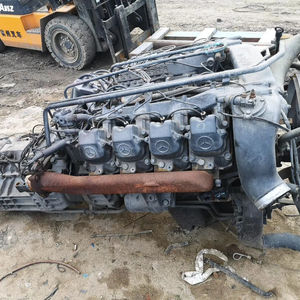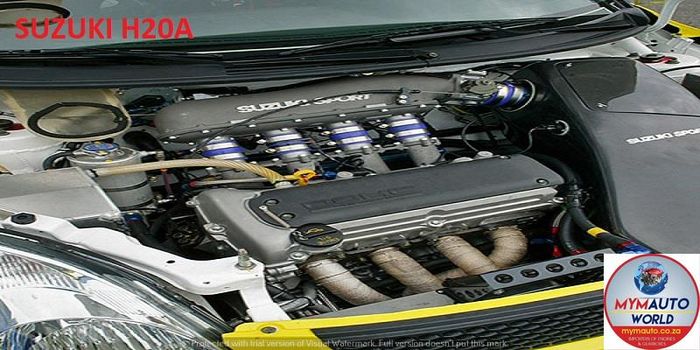Thorough Assessment of the Mechanical Parts of a Hatchback's Motor
Understanding the complex functions of a hatchback's electric motor belongs to unwinding a complicated challenge where every piece plays an important function in the general performance of the vehicle. opel corsa engine. From the integrated activities of pistons and cyndrical tubes to the precise timing of camshafts and crankshafts, each element operates in consistency to power the car. What truly establishes a motor apart lies in the better details - the fragile dancing of shutoffs and timing belts, the specific delivery of fuel with injectors, and the stimulate that sparks it all through spark plugs. As we explore the internal operations of these mechanical wonders, a deeper gratitude for the harmony of parts that drive a hatchback ahead emerges.
Pistons and Cylinders

The efficiency and efficiency of a hatchback's engine depend heavily on the smooth procedure of the cylinders and pistons. Appropriate securing in between the piston rings and cyndrical tube wall surfaces is critical to maintain compression and protect against loss of power. Additionally, the dimension and style of the cylinders straight impact the engine's variation and total power outcome. Normal maintenance and surveillance of these elements are vital to make certain ideal engine efficiency and long life.
Camshafts and Crankshafts
Camshafts and crankshafts play critical roles in the procedure of a hatchback's interior burning engine, facilitating exact timing and conversion of straight activity right into rotational energy. The camshaft, located within the engine block, manages the opening and closing of the engine shutoffs at certain intervals. opel corsa engine.
Any kind of misalignment or malfunction in these parts can lead to engine performance issues and potential damage. Regular upkeep and prompt replacements are necessary to make sure the smooth operation of these vital engine parts in a hatchback.
Shutoffs and Timing Belts
Playing an essential function in the synchronization and operation of a hatchback's interior combustion engine, the valves and timing belts function in combination with the crankshafts and camshafts to ensure optimal efficiency. Shutoffs control the flow of air and fuel into the burning chamber while eliminating exhaust gases. The timing belt, also called the camera belt, integrates the turning of the camshaft and crankshaft, ensuring that the valves open and close at the right times in connection with the piston position. Correct timing is important for the engine to function effectively and avoid damages due to disturbance between moving parts.

Gas Injectors and Stimulate Plugs
Fuel injectors and ignition system are important components in a hatchback's engine system, responsible for the efficient shipment of fuel and ignition of the air-fuel mixture. Fuel injectors play a vital role in the combustion process by exactly learn the facts here now spraying gas right into the combustion chamber at the best minute and in the right amount. This regulated shipment makes sure optimal fuel performance and power output. Modern hatchbacks typically make use of digital fuel shot systems that can adjust gas delivery based on different factors such as engine temperature level, load, and speed.
Combined with fuel injectors, ignition system are essential for firing up the air-fuel combination within the engine cylinders. When the ignition system creates a high-voltage electric current, it creates a trigger that stirs up the compressed air-fuel blend, initiating the burning process. Appropriately functioning ignition system are critical for engine performance, gas performance, and emissions manage. Normal inspection and maintenance of both fuel injectors and ignition system are vital to ensure the engine operates efficiently and effectively.
Air Conditioning System and Lubrication
Offered the important role of maintaining ideal engine performance and effectiveness in a hatchback, the cooling system and lubrication mechanisms are important elements that ensure proper working and durability of the automobile. The cooling system in a hatchback is accountable for regulating the engine temperature to stop getting too hot. It generally consists of a radiator, water pump, thermostat, and cooling down follower, collaborating to dissipate warm created throughout engine operation. Correct lubrication is equally essential as it minimizes friction between relocating components, protecting against deterioration. The lubrication system in a hatchback includes the oil pump, oil filter, and different lubes that minimize rubbing within the engine. Normal maintenance of the cooling system entails examining coolant degrees, checking for leakages, and making sure correct performance of cooling down elements. Frequent oil modifications and making use of the advised lubes are crucial for the lubrication system's performance. Together, the cooling system and lubrication systems play a crucial duty in keeping the hatchback's engine running efficiently and efficiently.
Final Thought

Pistons and cyndrical tubes are important parts within the inner burning engine of a hatchback, responsible for converting fuel into mechanical energy. The camshaft, situated within the engine block, manages the opening and closing of the engine shutoffs at particular intervals.Playing an essential function in the synchronization and operation of a hatchback's inner combustion engine, the valves and timing belts work in conjunction with the camshafts and crankshafts to make certain ideal performance.Gas injectors and stimulate plugs are vital elements in a hatchback's engine system, liable for the reliable delivery of gas and ignition of the air-fuel mix. Modern hatchbacks typically utilize digital gas injection systems that can readjust fuel delivery based on various variables such as engine load, rate, and temperature level.